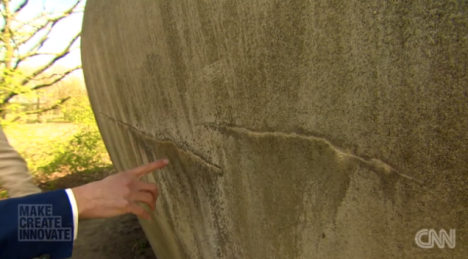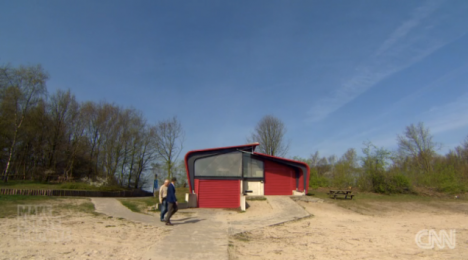One of the biggest challenges to building with concrete is the material’s propensity to crack both while it dries and in the years that follow, making this self-fixing solution an incredibly powerful application of bacterial biotechnology.
Developed by Dutch scientists Eric Schlangen and Henk Jonkers, this new biocement has been in development for years but is now first the first time a critical part of a real work of architecture and the results are extremely promising. As reported by CNN, one can already witness the self-healing process in action on the side of this lifeguard station, a test structure subject to highly varied sunlight and weather conditions.
Concrete is generally created with portland cement, aggregate and admixtures – this just adds one more key ingredient to the list: a mixture of bacteria and capsules of calcium lactate. Activated by water when cracks form, the former ingests the latter to produce calcite that in turn fills in gaps. Unlike algae-fueled bio-architecture that needs to remain alive and active, these bacteria can lay dormant for years without water or oxygen, lying in wait until called upon for an unpredictable future repair job.
Architects have long had to work around this critical limitation in concrete, creating separations between spans and avoiding sharp corners that crack and break. This technology could open up new possibilities for infrastructure as well as building designs, impacting everything from parking structures and sidewalks to skyscraper foundations and walls. Similar solutions are also in development, including a variant in development by MIT that uses sunlight as the activation mechanism rather than moisture, but this is the first full-scale application of such a self-healing material. Between these developments, concrete-printing and concrete-deconstructing robots, the future looks bright for this traditionally gray material.



